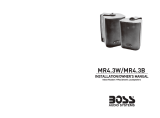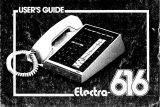8
(5) Soft Keys
Any feature shown at the bottom of the LCD is
available. The appropriate feature key is displayed
on the screen according to the call handling process.
(6) Help
Explanations of the Soft Keys can be called up on
the LCD by pressing this key.
(7) Programmable Keys
These keys can be programmed as Flexible Line
key/Programmable Feature Key by Telephony
Server Administrator.
When Telephony Server Administrator sets “One-
Touch Speed Dial key” on the programmable keys,
users can assign any numbers (ex. Telephone
number, etc.) to the key (up to 24 digits).
* For the assignment of the keys, confirm to the
Telephony Server Administrator.
(8) Recall
Press key to finish the call and hear the dial tone.
(9) Feature
Used to activate any features as terminal setup
functions, etc. and to program One-Touch Speed
Dial Keys.
(10) Answer
When LED on this key is lit, press key to answer a
waiting call.
(11) Mic
Press key to respond hands free. LED on this key
lights during speakerphone operation.
(12) Menu
From this key, the user can access to the functions
not normally used (such as terminal settings,
downloads and access to XML applications) easily.
(13) Cursor
By using this Key, DT Series user can access to
various features with simple operation.
Two lines of menu items can be displayed at a
time. Use "Up" or "Down" key to scroll the item.






















